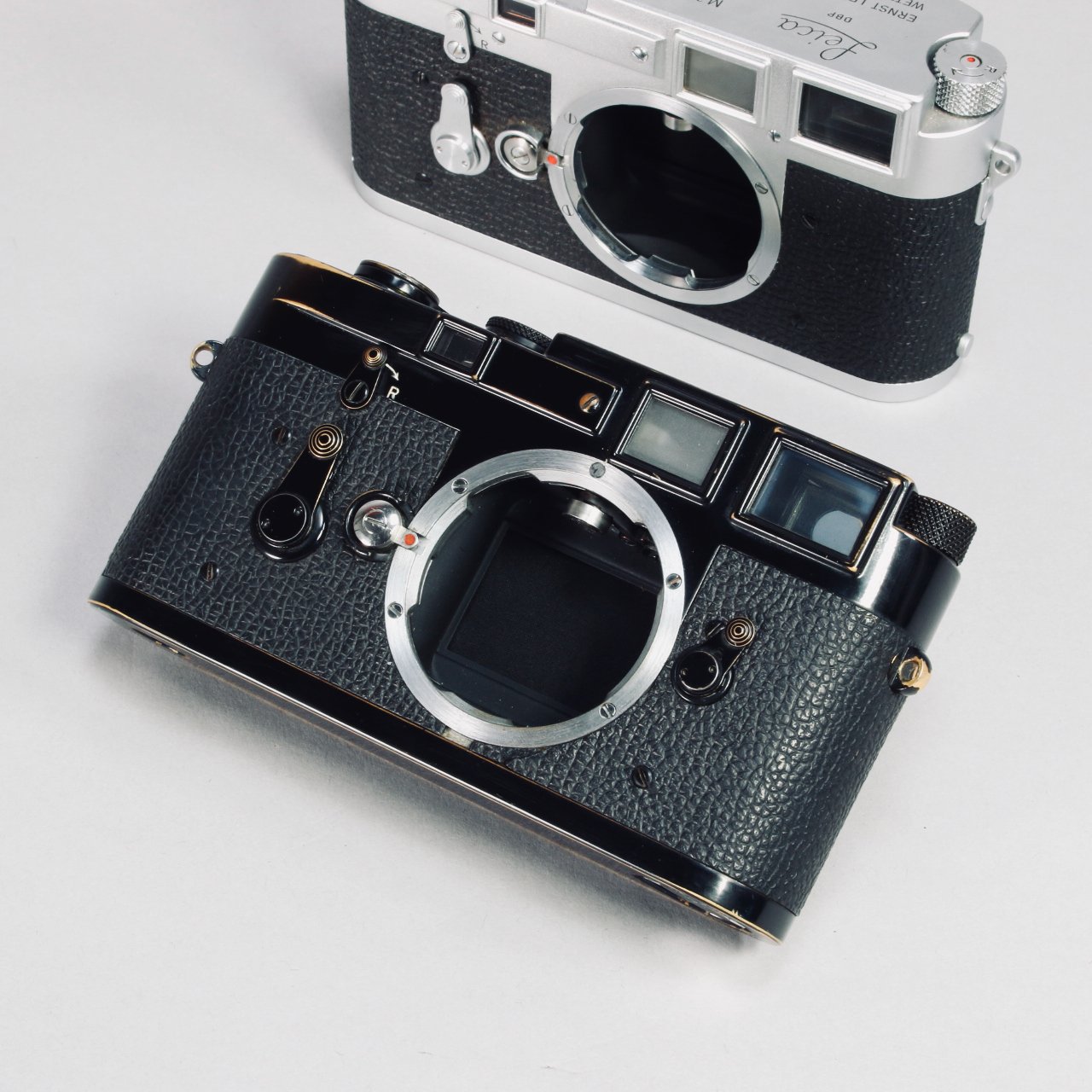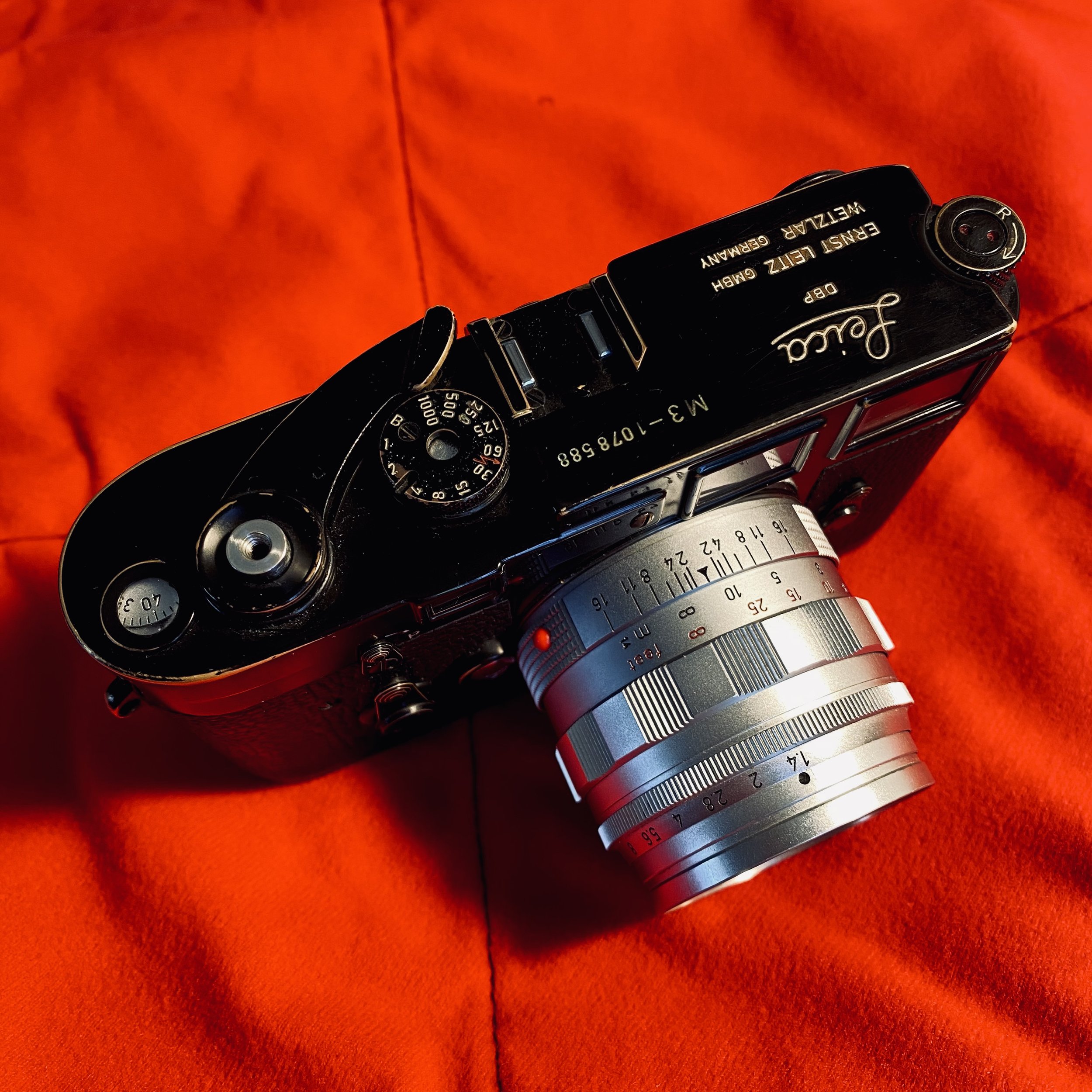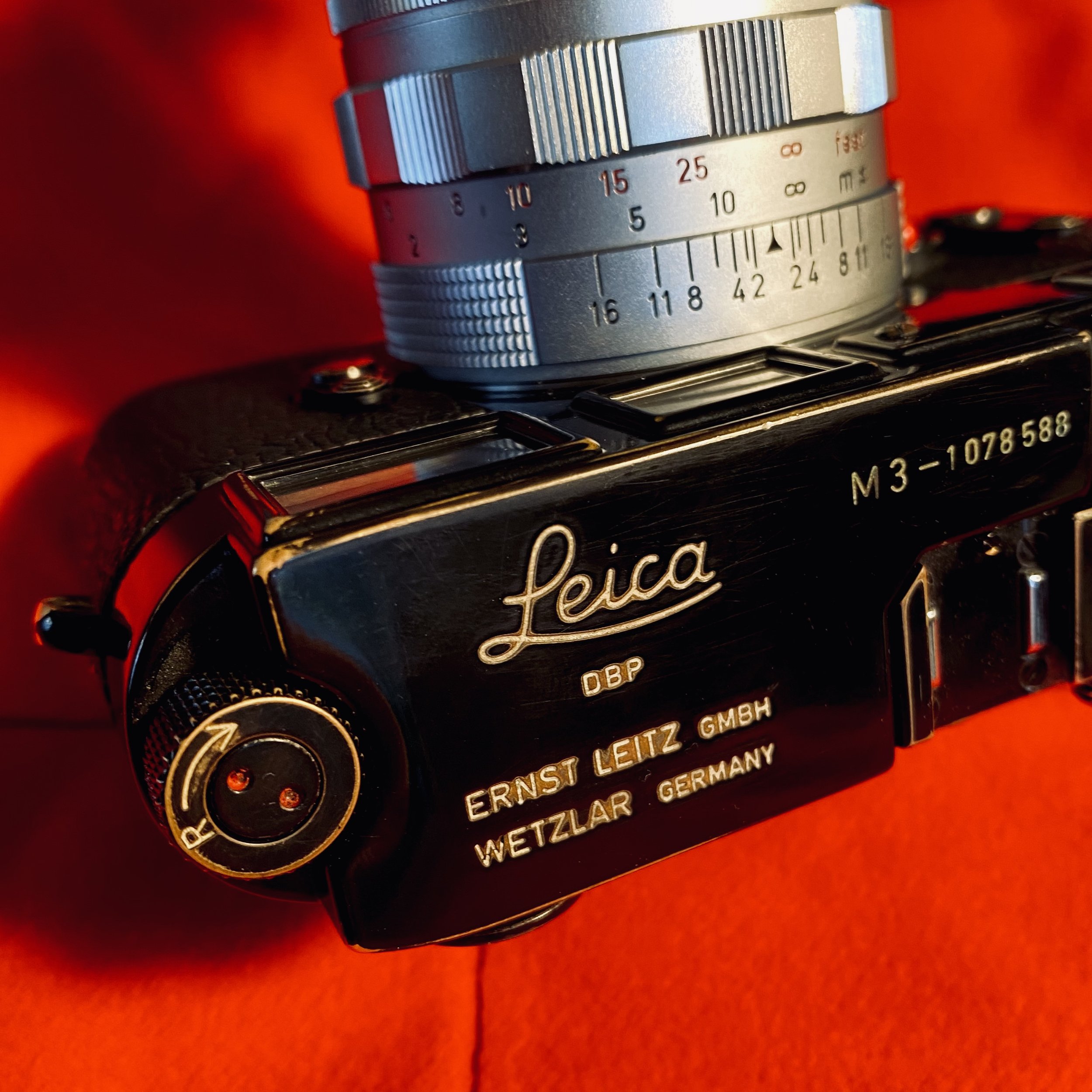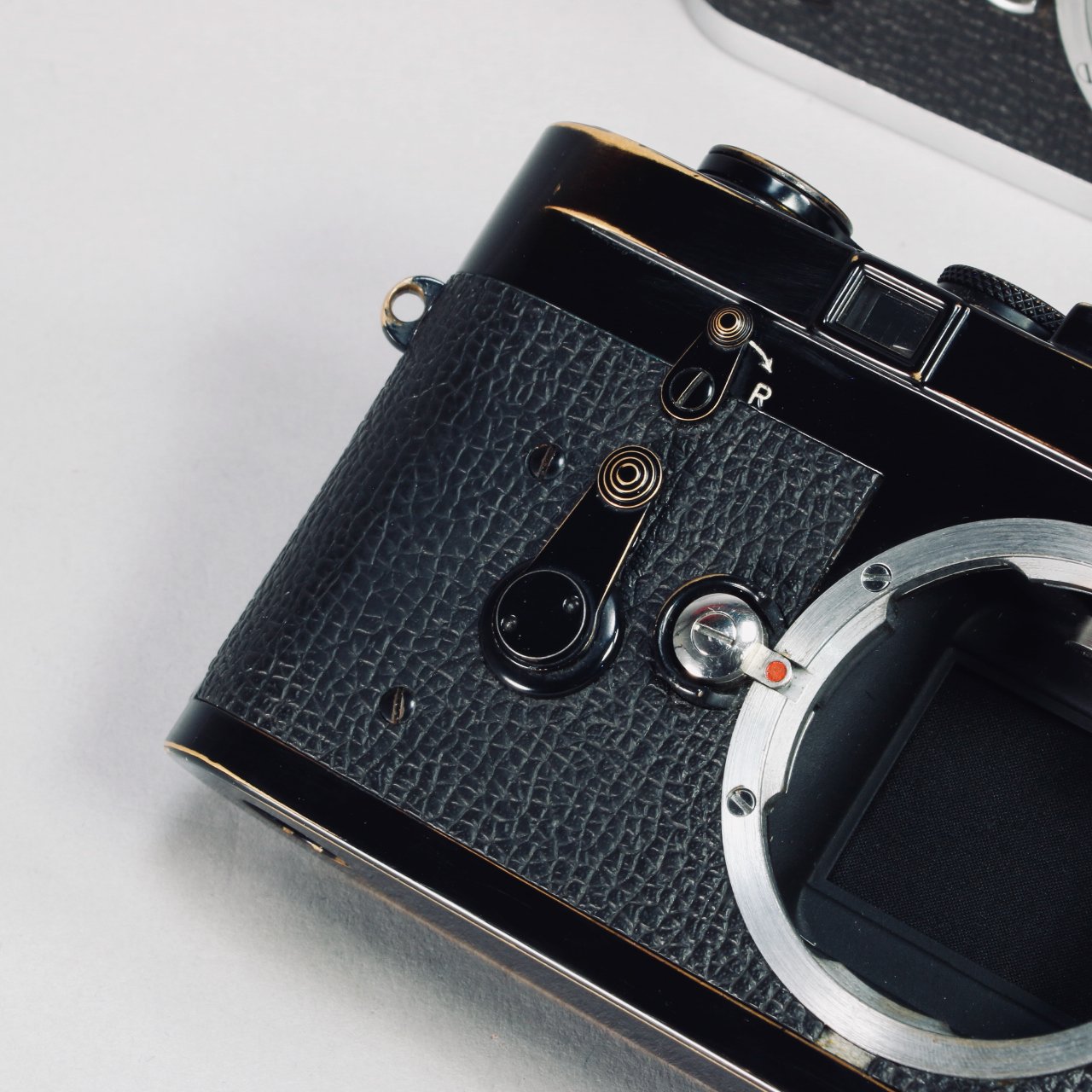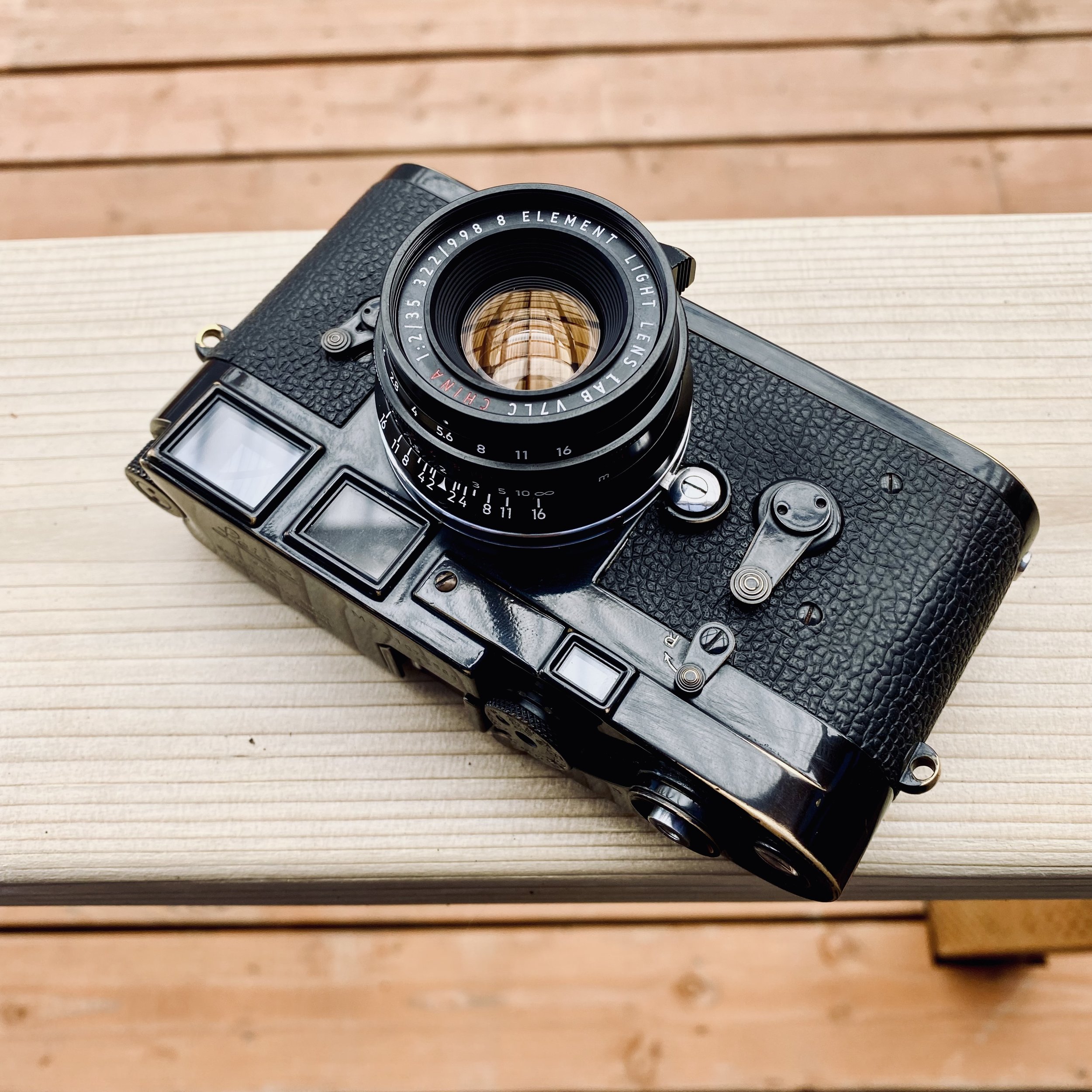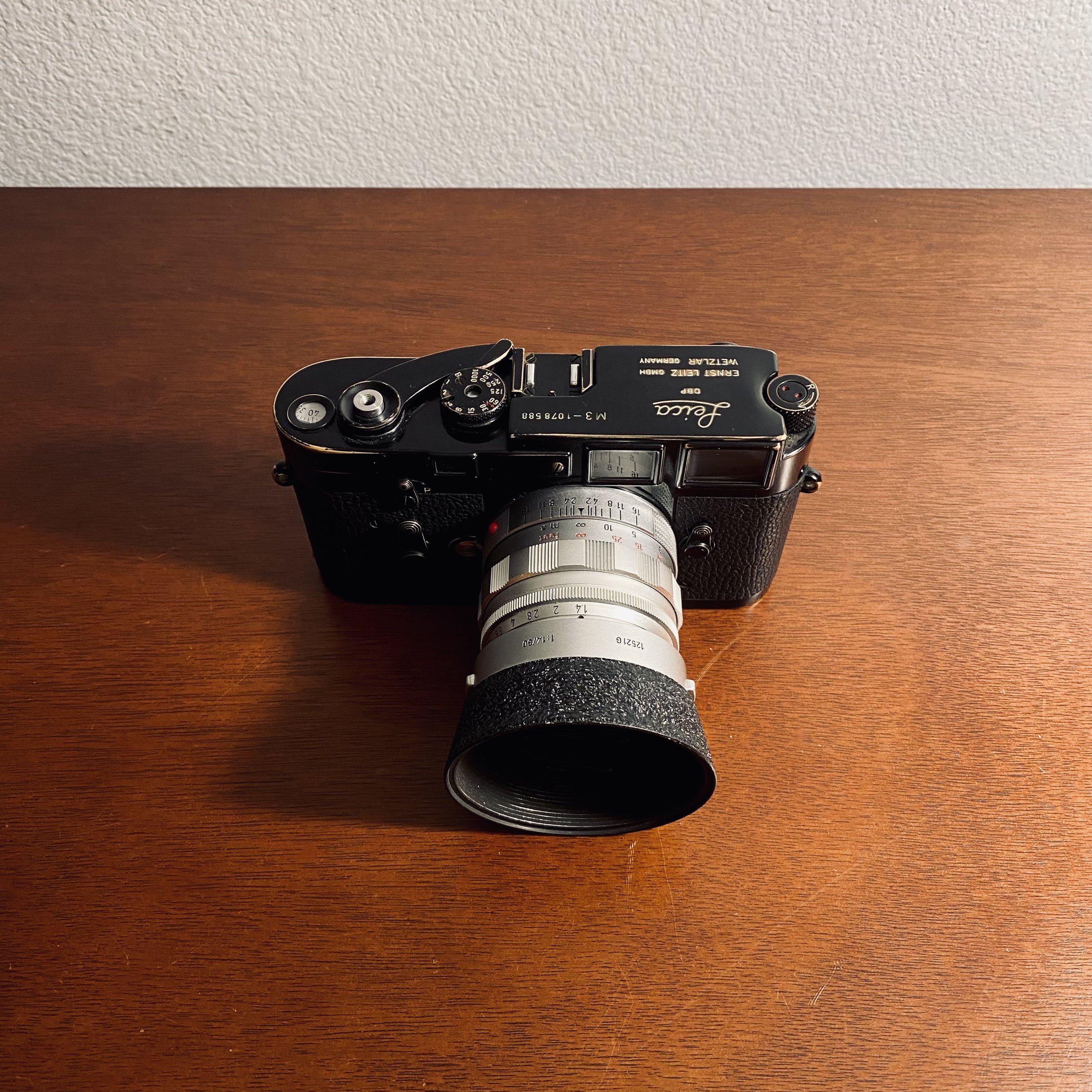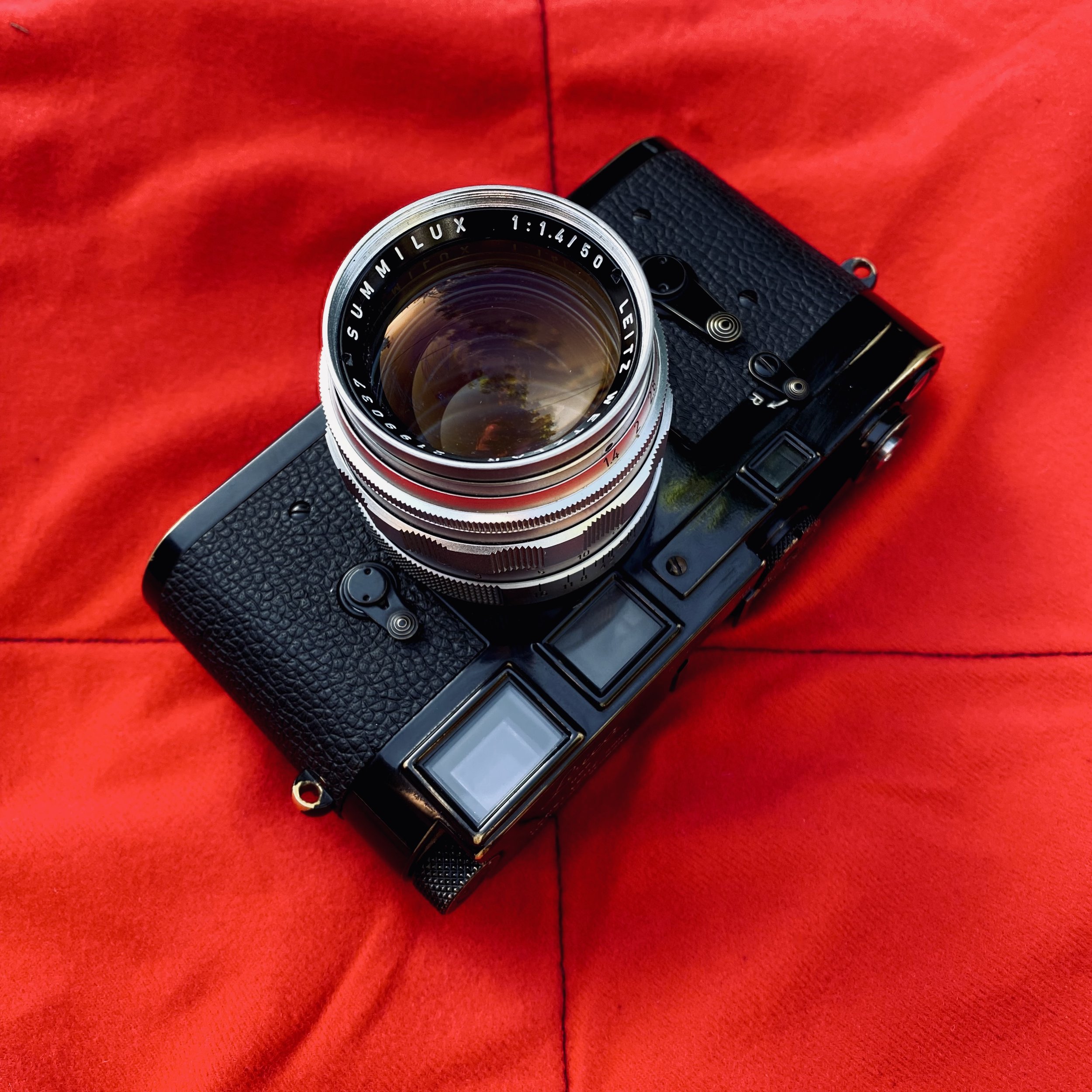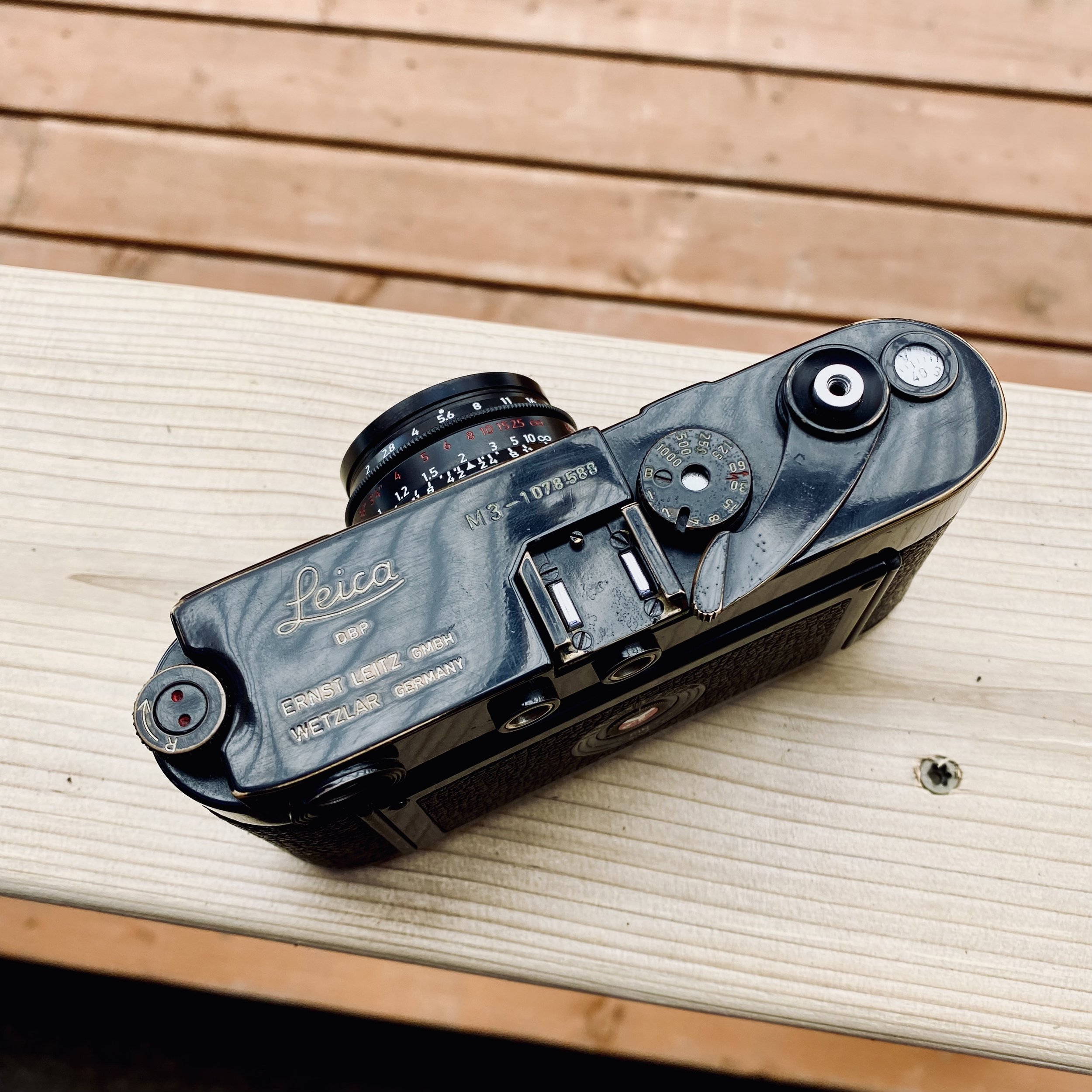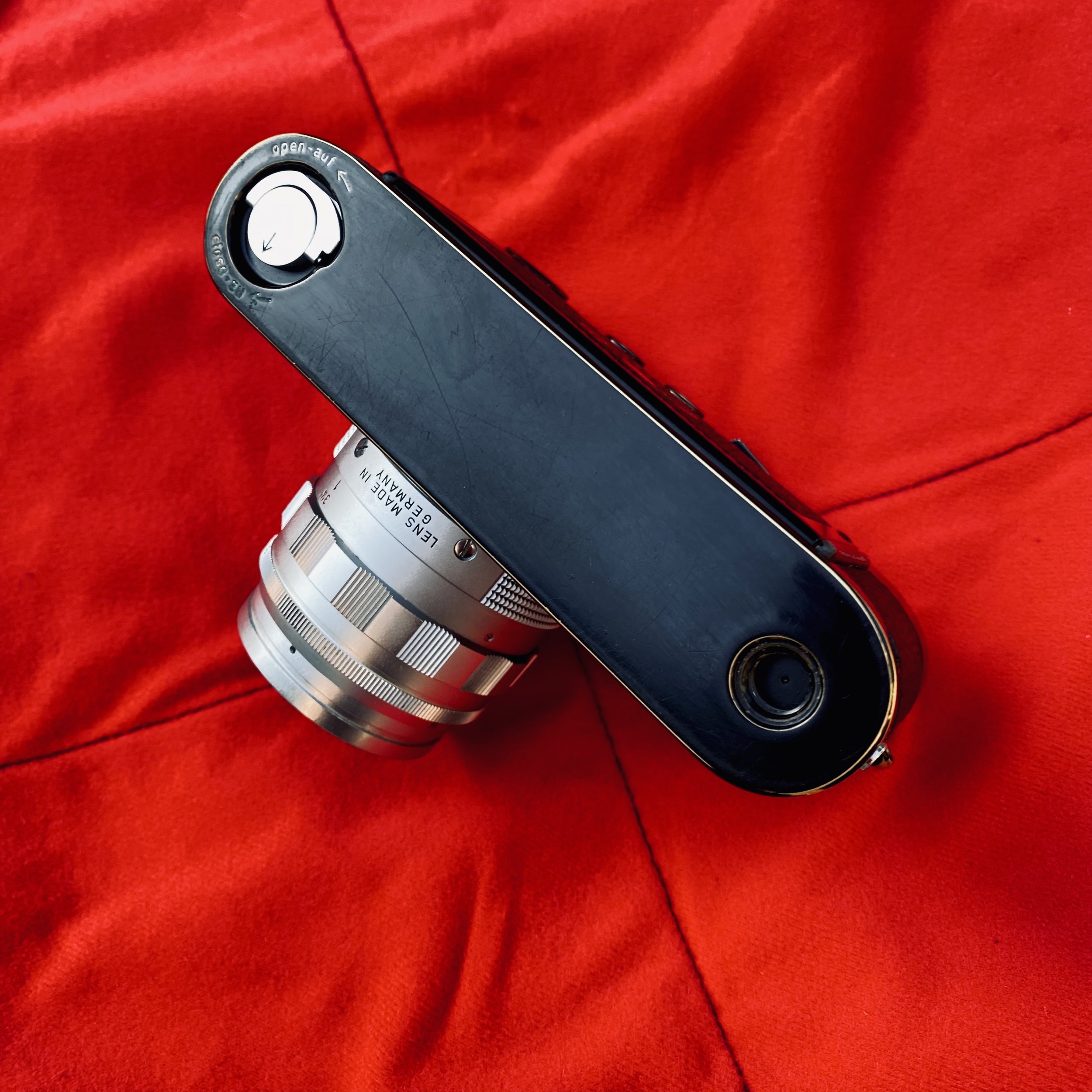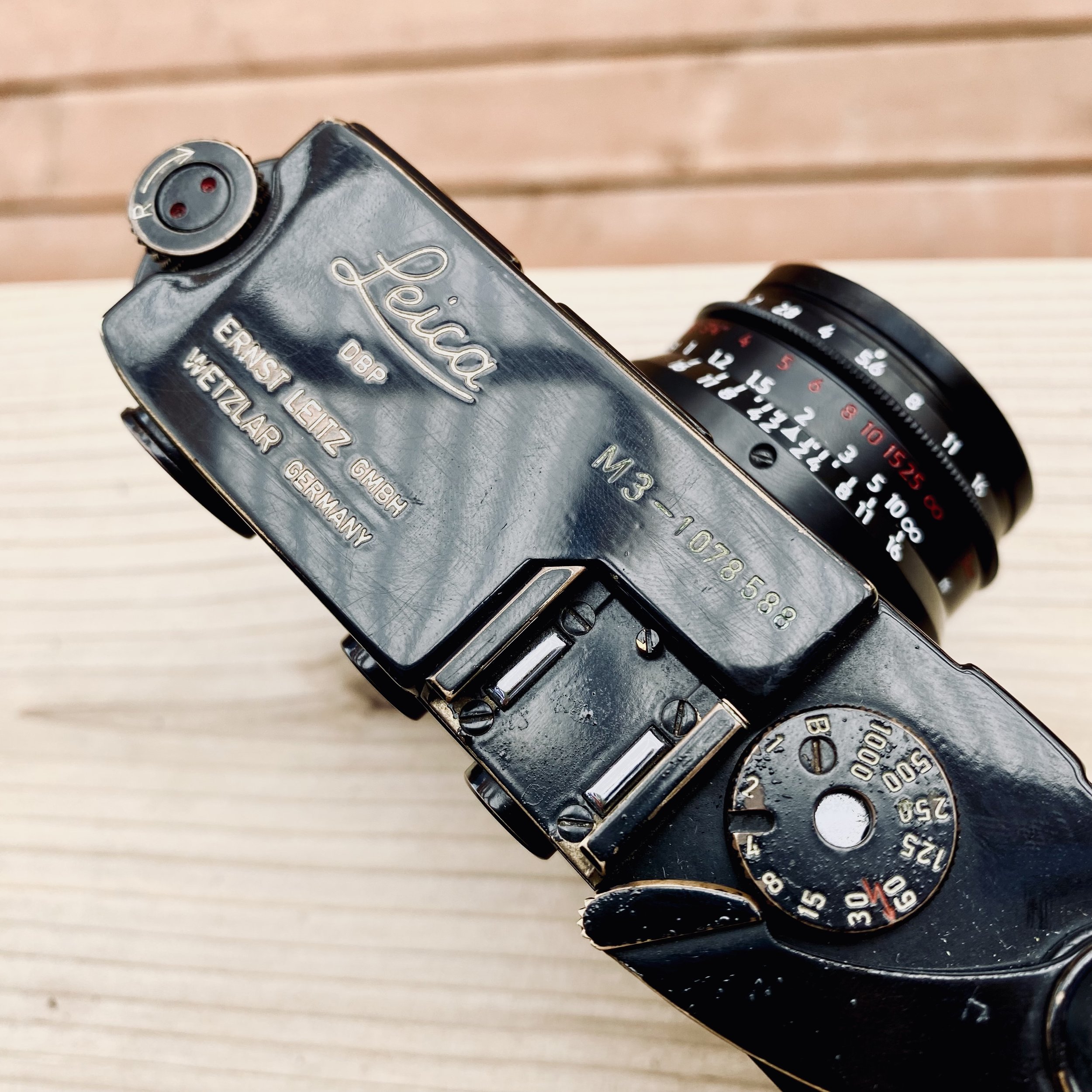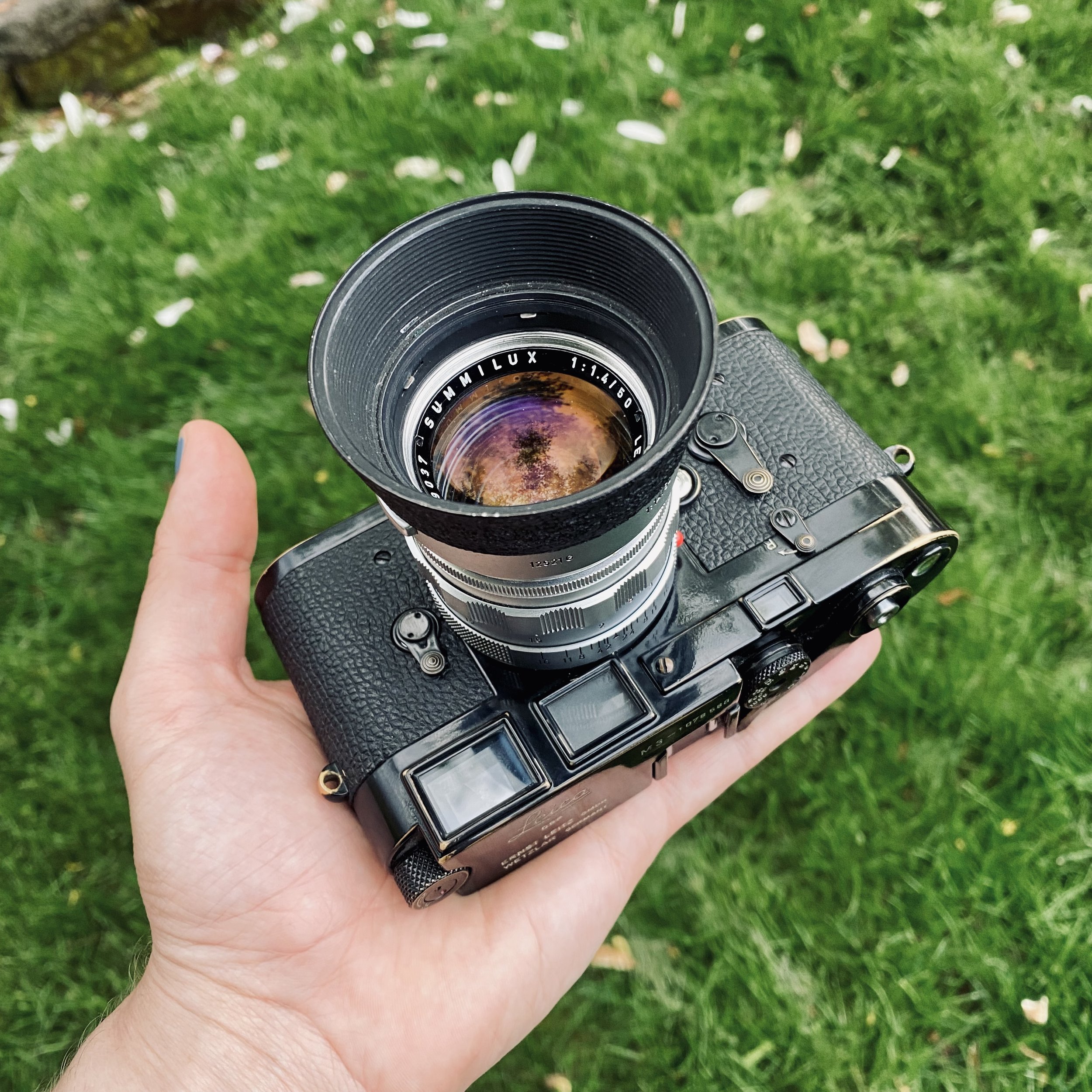Leica M3 Black Paint: Shooting with a Legendary Camera
Leica produced over 225,000 M3s — it is the first and most successful M camera ever built. Of those nearly quarter-million cameras, only 1,320 officially left the Wetzlar factory with “Schwarz Lackiert” — black paint.
Black paint is exactly that, a black enamel paint used to coat the brass exterior of an M3 instead of the standard satin chrome finish.
Due to their rarity, black paint Leicas are immensely expensive objects, points of cultural fascination that command astonishing prices at auction. They are by nature exclusive, and their price — sometimes in the millions of dollars — can be difficult to comprehend.
Like many great treasures, these cameras were not especially prized in their time. The M3’s value has appreciated only in the decades after it has ceased to be relevant as a hard-wearing professional tool. In its day, the M3 was the definitive choice for prominent photojournalists such as members of the Magnum Photo Agency, who depended on its steadfast reliability and smooth handling while on assignment.
Most black M3s that have survived show a heavy patina, their enamel rubbed away by years of use, exposing the rich brass underneath. This patina is a critical component of the mystique of these cameras, a lived history worn into the lacquer.
Black paint M3s are strong investments and are usually treated as such, guarded under careful lock and key. But their true value as collectibles derives from their utility, their association with the 20th century photojournalists and artists who used them. A black paint M3 will function as faithfully for you today as Henri Cartier-Bresson’s did in the 1950s. This is a part of their magic.
Ultimately these are cameras designed to be used and enjoyed, so when this stunning black paint M3 arrived at our shop for consignment, we carefully film tested it to ensure that its functionality matched its rarity. If you want to learn more about the history of black paint M3s, and what if feels like to use one today, keep reading.
Black paint was not always a rare option for Leica cameras — in fact, it was the standard finish for the first production Leica, the 1925 Leica I. In 1932, Leica introduced the Leica II, which featured a number of improvements (most notably the coupled rangefinder) and was the first Leica camera to be offered in chrome finish. Chrome is harder and more durable than enamel paint, and Leica charged a premium for cameras finished in the silver chrome. The higher cost of chrome finish means that most early Leicas are black paint: between 1932 and 1939, Leica produced 36,936 black lacquer IIs, compared with 15,573 chrome cameras.
By the time that Leica introduced the M3 in 1954, chrome was the standard finish for all Leica cameras. Black paint M3s were built on a special-order basis as early as 1955, but it was not until 1959 that the first official production batch of 100 cameras was made. At the time, black paint was a fairly inexpensive and rarely-chosen option offered at Leica dealers. In total, Leica officially produced 9 batches of black painted M3 cameras through the end of M3 production in 1967.
Chrome M3s have a silky smooth and durable satin finish that is usually only worn away by deliberate chemical process. In contrast, the black lacquer that Leica used to paint the M3 has a property that can cause it to “bubble,” leaving small raised marks on the finish. This affects black paint M3s to varying degrees but is seen most commonly in early cameras. Combined with the poor wear resistance of the black paint, it is not uncommon to see black paint M3s stripped almost entirely to the brass. Leica improved the quality of the black lacquer on later M3s (bubbling is absent on the M4) and even offered a repainting service to M3 owners who were displeased by the characteristic bubbling of the early paint. Owners of chrome M3s could opt to have their camera repainted black by Leica after purchase, but due to the reasons above, few chose to do so.
By the 1990s, interest in original black paint Leicas had increased substantially, and repair shops (notably Kanto in Japan) offered black repainting services for chrome cameras. Leica recognized this trend, producing the Leica M6 Millennium in the year 2000. This camera featured brass top and bottom plates, black enamel paint, and M3-style advance and rewind fittings, firmly establishing the current era of collector enthusiasm for black paint Leicas. Since then, Leica has produced a number of special black paint models, and each year black paint cameras sell for record-breaking prices at the annual Leitz Photographica auction in Wetzlar. In 2021, a 1959 black paint M3 with matching 50mm Summilux lens sold for €264,000 — this is far from the highest price paid for a Leica (that honor goes to Leica founder Oscar Barnack’s personal camera, the 0-Series no.105, which sold last year for €14,400,000) but demonstrates the fervent appetite for these cameras in today’s market.
With notable exceptions, early black paint M3s with serial numbers matching them to official production batches are the most prized by collectors. These early black cameras from the late 1950s are distinguished by a number of features: dual stroke film advance, “scientific” shutter speed dials,“buddha ear” or “long” strap lugs, glass pressure plates, and black-painted film counters.
This Leica M3 black paint #1078588 was built in a batch of 300 cameras in 1963, the largest official batch of black M3s. It is in excellent cosmetic and functional condition, with a natural patina on the corner surfaces. The black lacquer has a deep luster, as well as very minor bubbling on the advance lever and shutter speed dial.
M3 #1078588 demonstrates the refinements Leica made to their iconic design in the decade after the M3’s 1954 introduction. These include a single stroke advance, modern or “geometric” shutter speeds, circular strap lugs, steel pressure plate, and frameline preview lever. While these late-batch characteristics mean this M3 is less valuable at auction than some of its older siblings, the improvements made to its design make it a superior copy to actually shoot with. This is a quintessential example of the M3, built in Leica’s heyday, with a perfect feature set for real-world use.
Taking the camera out to shoot with it, the gravity of holding something so valuable is balanced by the M3’s dependable utility. If you are used to shooting a single stroke M3 (or any M camera) you will feel right at home picking it up and adjusting it — after all, it is mechanically identical to the chrome-finished cameras of its era. This camera is less cold to the touch than a chrome one.
I handled this camera extremely carefully for the short time I used it, and was generally in awe of it at all times. The M3 has an immense presence that is hard to describe, it’s cultural and historical weight set off by understated class. The black lacquer has two natures: it can appear almost matte in certain light, and at other times takes on a liquid shine.
The irony of choosing black paint to make your Leica more discreet and thus more effective as a photographic tool is that black cameras are much more conspicuous to Leica enthusiasts. Black paint cameras have become a popular choice for custom repaints, and Leica’s own MP and black lacquer special editions mean that there are more black cameras on the market than ever. Having held a number of very credible repaints and black M6/M7/MP cameras, I am reminded by this camera how much more special original black M3s feel in hand. Each time I have seen one of these cameras it has left a rich memory, a vision of a camera bag or cabinet opening to reveal a burnished black gleam with bronzed edges.
Black paint M3s can also free you from the trap of not being able to actually use your rare collectible for fear of reducing its value. The inherent instability of the paint and the cultural shift towards desiring heavily patinated copies means that the value of a black M3 will not degrade drastically with a scratch to the baseplate. You can “daily drive” your black M3 without ruining your investment, which is a unique and appealing proposition.
What struck me most about using this M3 black paint was how quickly the mystique of its beauty and rarity gave way to the M3’s familiar usability as soon as I brought it to my eye. The advance was smooth and snappy, the rangefinder crisp and easy to focus, and the camera generally performed with an alacrity that made room for the photographic task at hand. To test the camera, I brought it with me for a special evening with my family, relying on it to record important moments in our lives and adding our small part to its rich history.
The negatives from my evening with the M3 confirmed that it is in excellent working order, with even spacing and accurate exposures. Focus was accurate with both my 35mm f1.4 Summilux Pre-Asph and 50mm f1.4 Summilux v1.
The lucky person who becomes the next owner of this iconic camera can rest assured it is every bit as capable as it is collectible. With the right sense of adventure, a 1963 black paint Leica M3 is the ultimate object of camera style.
As of June 2023, this black paint M3 is in our inventory. If you would like to give it a new home you can find it via this link.


